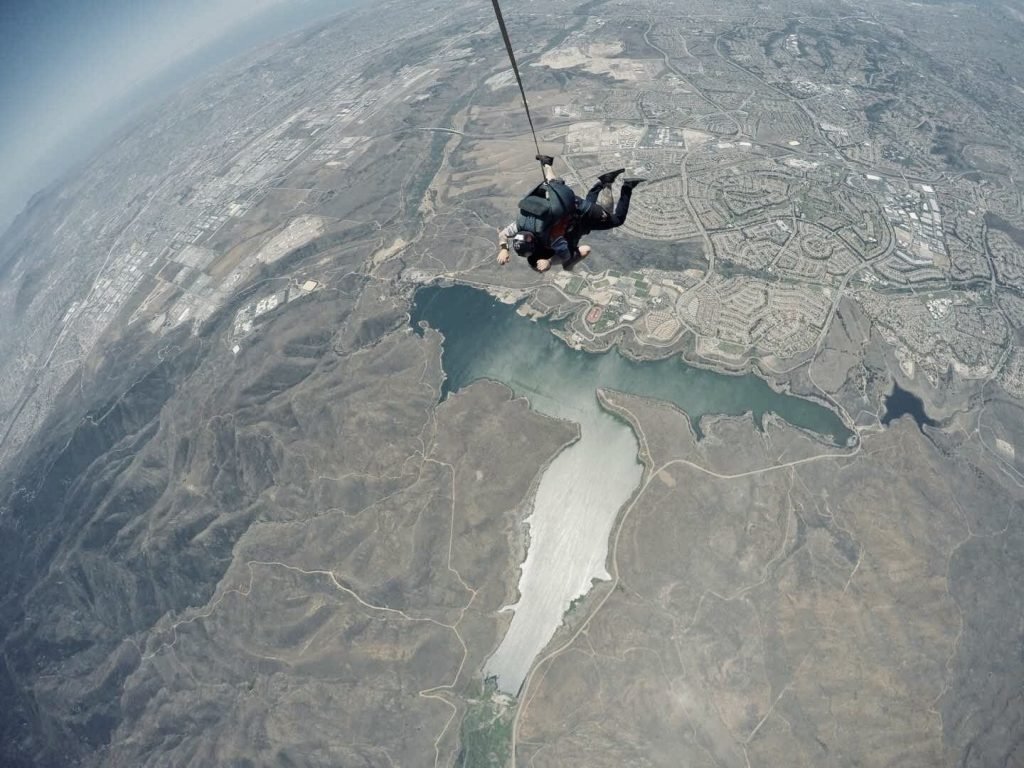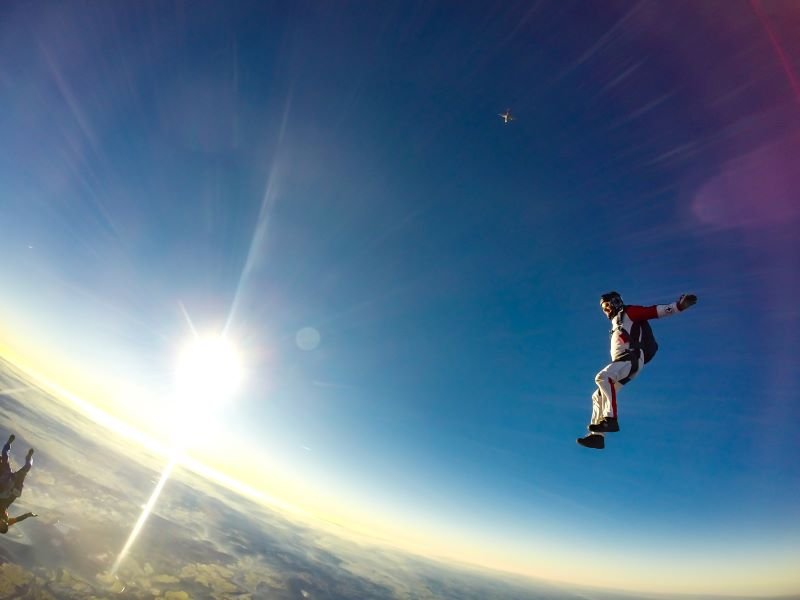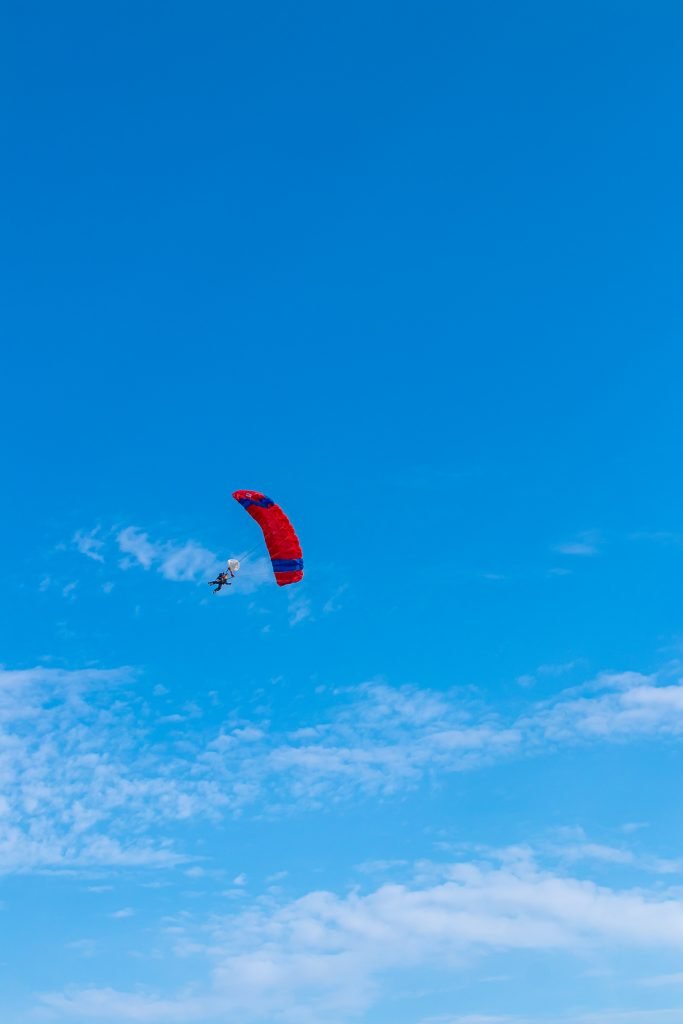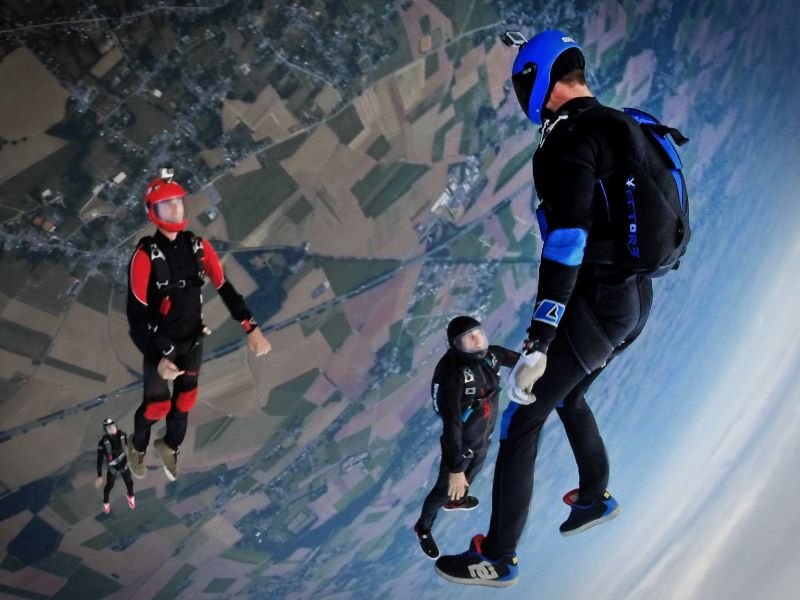Skydiving! If the idea of jumping from a plane miles in the sky excites you, then skydiving is just the outdoor experience you’re missing out on. When you go for a skydiving experience, there is a wide range of altitudes offered, from 7000 feet to 18000 feet. If you’re a first-time sky driver, the height to jump from is one of the most important decisions to make.
What’s the maximum height you can skydive from? Read ahead to find out!
While experienced skydivers can fall from a variety of heights, the range becomes shorter for tandem heights and depends highly on the institute you’re diving with. In tandem skydiving, you’re attached to a certified instructor who does all the hard job for you, all you have to do is enjoy the astounding landscape and revel in the freedom of flying through large expanses of sky. But first! Why does the height matter? Well, a typical skydiving experience is made up of 4 parts. The aircraft journey to the height, the jump, the freefall, and the parachute. The aircraft size increases when the height increases, the jump remains the same for all experiences, and the freefall and parachute time depend on the height you dive from.

The sensation during freefall is the same you’d feel when you put your hand out of the window of a fast car. The wind forces your hand back, but the weight of your hand keeps it from going backward. This is the same experience you’ll get when you’re in free fall, the air below puts upward pressure on your body, and you feel like you’re floating through the air. For a 10,000 feet jump, you’ll be in freefall for 30 seconds, and this comes up to 60 seconds for a 14,000 feet jump. The rest of the journey is with the parachute opened, which takes more time and is a much calmer experience.
What is the maximum height you can skydive from?
The first time you skydive, the height won’t matter. If you have skydived before, you’ll understand why the extra free fall seconds higher jumps provide the matter. In tandem skydiving, the maximum height you can skydive from is 18,000 feet. Chattanooga Skydiving Company, in the US, provides this height for tandem jumping. The altitude gives you a whopping 2 minutes of freefall!
Before you hop on for an 18,000 feet jump, here’s an important fact: This fall will require you to wear an oxygen mask. If you’ve ever climbed a mountain, you’ll notice you feel less air at a higher height. It’s not that there’s less air, it just becomes thinner which makes it harder to breathe. You’ll feel this especially when jumping from 18000 feet, the inadequate oxygen supply makes for an uncomfortable experience, and takes away from the pleasures of skydiving. The lack of oxygen in the cells and tissues causes Hypoxia, which leads to slower reaction times, altitude sickness, poor decision-making skills, and can even have fatal complications.
Obviously, these extreme high altitude jumps require professional jumpers, specialty aircraft, and supplemental oxygen.
What is the maximum height you can skydive without needing oxygen?
If you’re not thrilled with the idea of wearing an oxygen mask while skydiving, we hear you! While the higher jumps give you more freefall time, using an oxygen mask takes some fun away. Your face might feel constricted, and where’s the fun when you can’t scream at the top of your lungs?
Typically, the maximum height you can skydive without needing oxygen is 15,000 feet. You still get a little more than 60 seconds in freefall, giving you plenty of time to revel in the breathtaking landscapes the experience brings.

Can you skydive from 35000 feet?
When even the 18000 feet jump fails to excite you, HALO skydiving has your back. High Altitude Low Opening skydiving was originally developed as a means for tactical military to deliver military equipment, supplies, and personnel to distant or enemy areas. Simply put, you jump from a height anywhere between 15000 and 35000 feet and deploy the parachute at a lower altitude.
So why choose HALO skydiving? Well, freefall time is related to height, and higher heights give you a greater freefall time. With a 35000 feet jump, your freefall time increases to 3 minutes. For those three minutes, you’ll experience slowly falling through the air, feeling like a bird, and enjoying the splendid scenery around you.
Well, can you go higher? The record for the highest free-fall parachute jump is 135,890 feet, on October 24, 2014, by Google Senior VP Alan Eustace. The freefall lasted 4 minutes and 27 seconds, the longest ever recorded.
For commercial skydiving, however, the maximum height is 35000 feet, which still gives you plenty of freefall time.

What is the lowest height you can skydive?
If you’re a first-time skydiver, it might be a good idea to start small (well, as small as skydiving can get!) Generally speaking, the lowest height you can skydive is between 7500 to 9000 feet, depending on the company you skydive with.
There might be a number of reasons why you might want to start small, the most common is the price factor. For a first-time experience, you don’t necessarily care about the freefall time, so a lower-cost option is a perfect fit for you. You can always choose more expensive packages for the greater height they provide, but a 7500 feet jump will still be enjoyable if you’re new to skydiving.
What about the freefall? Well, for a 7500 feet jump, you’ll experience 20 seconds of freefall.
The Bottom Line
The average industry range for tandem skydiving is 7500 to 18000 feet. The minimum height to tandem skydive is 7500 feet which gets you 20 seconds of freefall. The maximum height for this category is 18000 feet which increases freefall time to 2 minutes, but anything above 15000 feet will require you to wear an oxygen mask. For people looking for higher heights, HALO skydiving accomplishes 35000 feet.
If tandem skydiving is too scary for you, try indoor skydiving, it’s safer!

